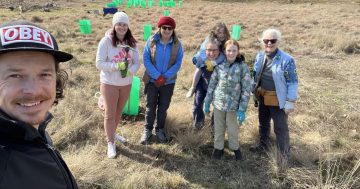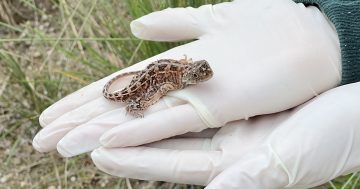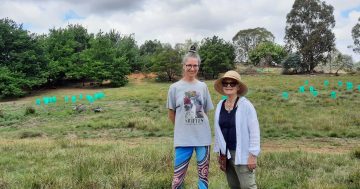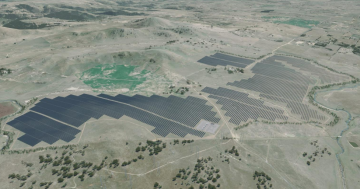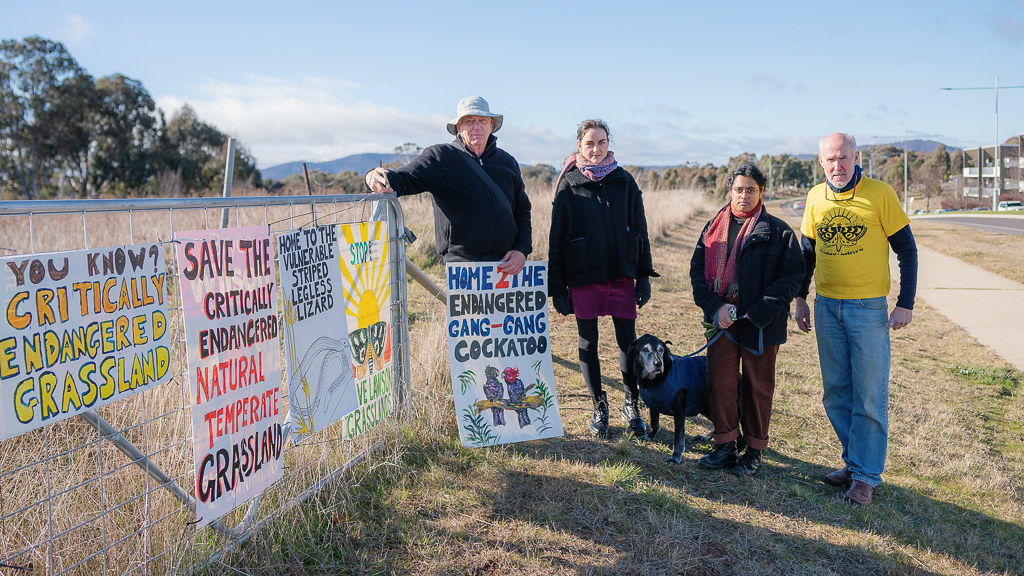
Conservationists, including Elle Lawless (second left), opposed the Defence housing project at Lawson North. Photo: Richie Southerton.
Conservationists may have won a battle over the Lawson Grasslands but their war against a Defence housing project on the former Belconnen Naval Transmitting Station will go on.
The Conservation Council ACT Region and Friends of Grasslands have been battling the Defence Housing Australia proposal in Lawson North since it became public, arguing that it threatens critically endangered Natural Temperate Grasslands in the Belconnen region.
DHA has now halved the size of its project site from 47 hectares to 24 ha, with the number of homes to be built falling from 443 to 143, of which 99 would be in multi-unit blocks for Defence personnel and families, down from 150.
DHA originally proposed setting aside 100 ha of threatened Natural Temperate Grassland as an offset. This would now increase to 120 ha.
In 2022, the proposal was referred for assessment under federal environment law, and last December, DHA applied to vary the proposal. The Department of Climate Change, Energy, Environment and Water signed off on the change on 23 January.
A DHA spokesperson said the revised project size was in response to concerns about potential impacts on biodiversity, heritage, values, access and parking. DHA conducted a thorough investigation to redesign the master plan.
“This comprehensive approach aimed to safeguard all aspects and ensure the Canberra site’s readiness for the planned development,” the spokesperson said.
The department said it received 100 public comments on the referral, including concerns about impacts on listed threatened species and communities, heritage values (historic, natural and cultural), and people and communities, including traffic.
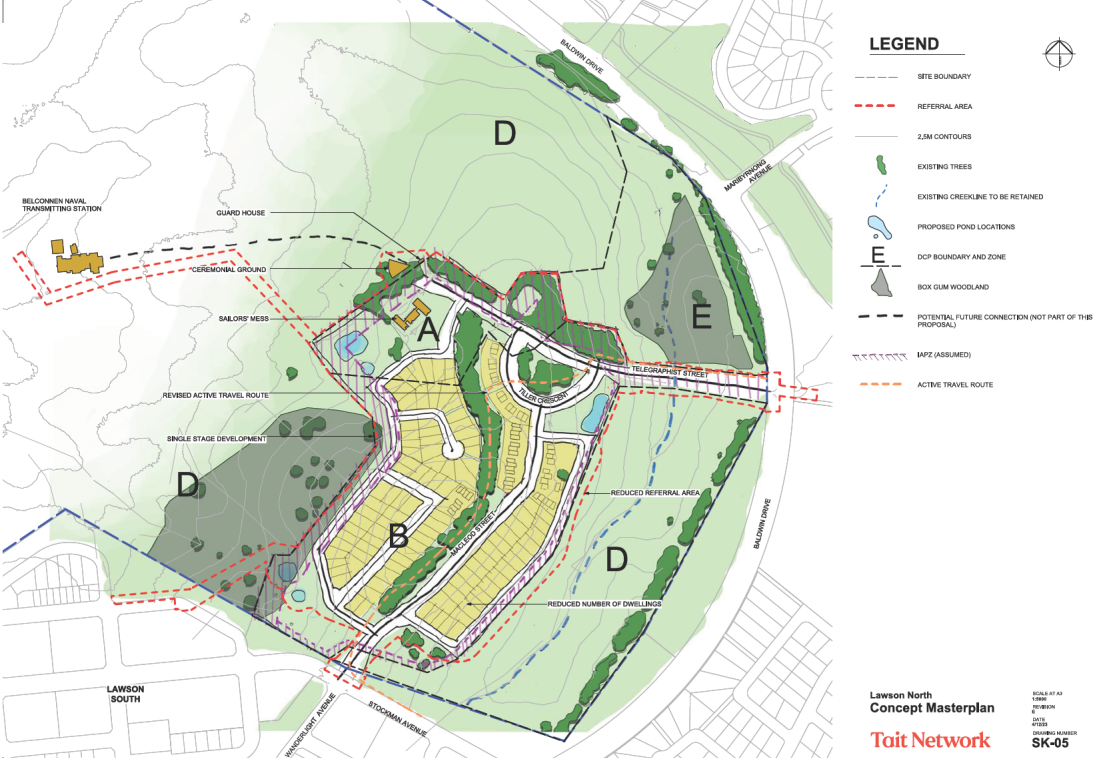
The revised master plan for the Lawson North Defence Housing Australia project. Image: DHA.
Executive director of the Conservation Council ACT Region Elle Lawless said the change was a victory for people power.
She said more than 100 experts and environmental organisations had spoken out against the proposed development, and over 650 people had signed a petition calling on DHA not to proceed.
“In the lead-up to the 2022 federal election, over 70 Canberrans rallied at the site opposing the development, and many more wrote to their local candidates calling for action,” Ms Lawless said.
“It’s because of community submissions, political pressure and public protests that the proposed project area has been reduced in size.
“But the Conservation Council and the Canberra community would continue to push for the whole of Lawson Grasslands to be protected.”
She said the new proposal would still destroy significant areas of critically endangered Natural Temperate Grasslands and Box-Gum Woodland.
“The fact that this site at Lawson North contains not one but two critically endangered ecological communities should be enough to ensure its protection under federal nature laws,” she said.
“In a biodiversity crisis, this is unacceptable and is pushing our wildlife towards extinction.”
Ms Lawless said Lawson Grasslands supported many threatened species, including the Golden Sun Moth, Striped Legless Lizard and the ACT’s bird emblem, the Gang-gang cockatoo.
“Destroying their homes at Lawson will only make their future more precarious,” she said.
“Without places to live, these species will become even rarer and eventually extinct.”
Ms Lawless said the project still faced a significant hurdle, being required to be assessed under national environment law for approval or rejection.
Under the changes, the Golden Sun Moth habitat to be impacted would be reduced from 11.6 ha to 6.7 ha. For the Striped Legless Lizard, only 2.3 ha would be affected, down from 26.53 ha.
The clearing of Natural Temperate Grasslands would be slashed from 15.8 ha to 1.7 ha.
DHA would continue preparing an Environmental Impact Statement (EIS) as required by DCCEEW, the spokesperson said. This was scheduled for completion in 2025.













